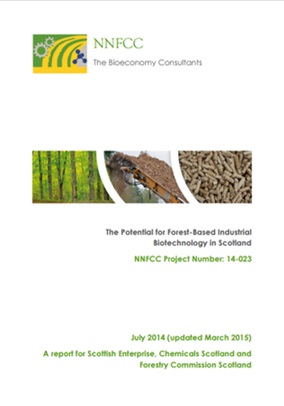 Highlights
Highlights
- Analysis of available forestry resources in Scotland
- Insight into existing biorefinery industry in Scotland
- Exploration of available opportunities for forest-based biorefinery
- Identification of potential barriers and challenges the forest-based biorefinery sector may face
- Ranking of established opportunities, and setting-out of a roadmap for development
Reasons
to buy
- To inform forestry managers in Scotland of the ways they could contribute to industrial biotechnology
- To advise biorefinery developers on the possible opportunities in Scotland, and their feasibility
Number
of pages: 59
Accessibility: This item is available to all NNFCC subscribers or through individual purchase
Summary
The emerging bioeconomy both in the EU and globally is offering new opportunities for development of high-tech industries and jobs in the chemicals sector. Increasingly, lignocellulosic plant biomass is being developed as a cheaper and more environmentally sustainable and acceptable source of feedstocks for biobased fuels, chemicals and materials.
The forestry and chemicals sectors are both important contributors to Scotland’s economy, but both are subject to increasing global pressure from competitors. Scottish Enterprise in partnership with Chemicals Scotland and Forestry Commission Scotland were keen to understand what opportunities might be available to exploit the Scottish Forest resource as a feedstock for the biobased chemicals sector.
This analysis sought to understand the net domestic forest wood resource that could be made available to support bio-based product industries in Scotland, the nature of the existing infrastructure and academic base, the potential opportunities that this resource is capable of supporting at world scales of production capacity, and the steps required to realise these opportunities.
You may also be interested in: